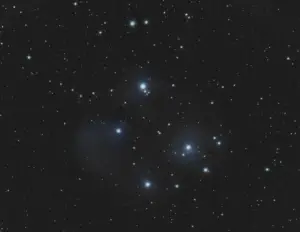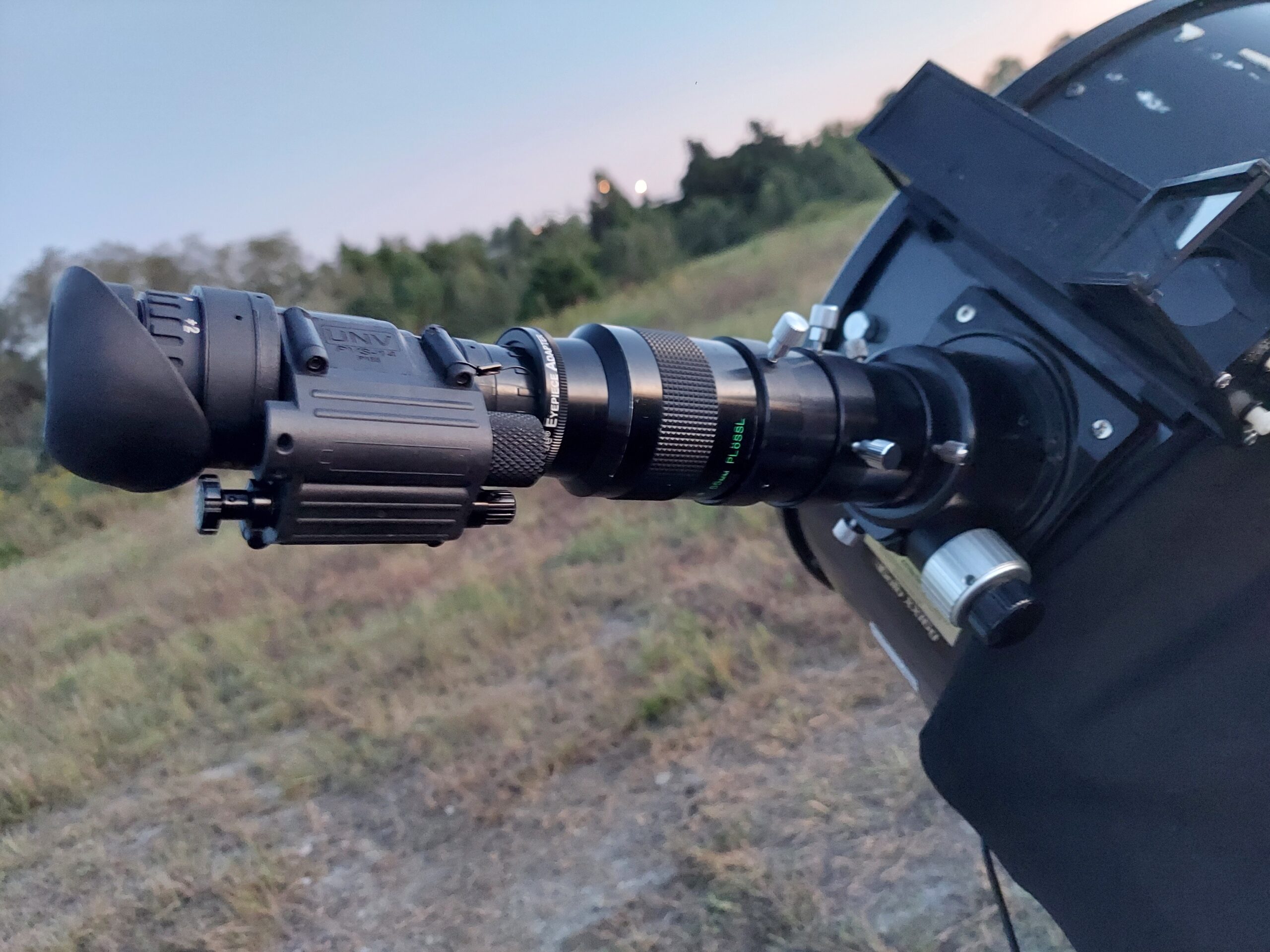Telescopes need eyepieces to work.
Eyepieces come in three sizes; 0.965”, 1.25”, and 2”.
Telescopes usually have focuser sizes that are 2”, but they often come with an adapter for 1.25” eyepieces, so most 1.25” and 2” eyepieces will fit into most telescopes. 0.965” size focusers are generally only found on vintage or very low quality telescopes and should generally be avoided. Be sure that the eyepiece is compatible with your focal length.
Focal length can impact eyepiece compatibility and make eyepieces less useful, so check the formula below to be sure that the eyepiece will fit within your useful magnification.
Changing magnification requires you to switch eyepieces. The magnification provided by an eyepiece is determined by its focal length, along with the focal length of your telescope. You must have an assortment of eyepieces if you want an assortment of magnifications for your telescope.
For experienced users, this might seem obvious, but newcomers are often surprised to learn this.
Good-quality eyepieces can make a tremendous difference in your observing sessions, and it can be intimidating to spend that money. Should you bother investing in good eyepieces if you plan on upgrading your telescope one day? Won’t that be a waste of money?

The good news is that, for the most part, telescope eyepieces are universal.
With certain exceptions, eyepieces can be swapped between telescopes without issue. It’s not uncommon for someone to sell or trade their telescope numerous times while keeping the same eyepieces.There is a thriving market for used eyepieces.
Because most eyepieces are interchangeable between telescopes, it is relatively easy to find a buyer should you want to make a switch.
The most important factors in selecting eyepieces are to know the size of your focuser, and the focal length of your telescope. From there, you can easily determine which eyepieces might be suitable for you.
How Many Different Eyepiece Formats Are There?
There are three eyepieces barrel sizes for amateur telescopes.
0.965” Eyepieces
For many years, this was a common barrel size, especially on Japanese instruments. Nowadays, you only see this format on vintage telescopes, or very cheap refractors.
If you are shopping for a telescope, one of the first things you should check is what type of focuser it has. If it only accepts 0.965” eyepieces, you should probably pass on it. Such eyepieces are hard to find and are often of poor quality. Plus, when you upgrade the telescope, those eyepieces will most likely be useless to you, and probably hard to resell.
0.965” eyepieces are NOT universal.
There are adapters which will allow a 0.965” eyepiece to fit into a 1.25” focuser, so if you do end up acquiring some of these old-fashioned oculars you can still make them work with a modern telescope.
1.25” Eyepieces
A 1.25” eyepiece will fit into virtually any telescope on the market. It is the modern standard format.
There is a huge assortment of 1.25” eyepieces on the market, from the ultra-cheap to ultra-premium and everything in between.
These eyepieces are well suited for short and medium focal lengths.
Telescopes with 2” or larger focusers will usually come with a 1.25” adapter; if not, such adapters are easy to find.
Even 0.965” focusers can be adapted for 1.25” eyepieces, though you will lose some apparent field of view in doing so.
At longer focal lengths, the 2” eyepiece becomes more popular.
2” Eyepieces
These extra-large eyepieces are becoming more common, as manufacturers push the limits of apparent field of view in their designs.
It is important to note that 2” eyepieces are not compatible with 1.25” focusers. These days, most popular telescope models above the entry-level price point will be equipped with 2” focusers, but you should definitely double-check before buying a 2” eyepiece if you are not sure.
2” eyepieces are popular for the extra-wide fields of view, providing sweeping views of starfields and easier object locating.

How does focal length impact eyepieces?
Other than barrel size, the other consideration for eyepiece compatibility is focal length.
This is because the magnification provided by an eyepiece is dependent not just on the eyepiece focal length, but also the telescope focal length. For example, a 5mm eyepiece provides 100x magnification in an 80mm short-focus refractor with a focal length of 500mm. But in a 130mm Maksutov, with a focal length over 1500mm, this same eyepiece provides over 300x magnification, which exceeds the small telescope’s useful magnification range.
At the other end of the scale, there is such a thing as too little magnification.
The key to all of this is the exit pupil size provided by a certain telescope/eyepiece combination.
To find your exit pupil size, simply divide the aperture of your telescope (in millimeters) by the magnification of the eyepiece.
The ideal range of exit pupil sizes is roughly 2-5mm, while the absolute minimum-to-maximum range is considered 0.5-7mm.
Though nothing bad will happen if you exceed this range, you won’t be doing yourself any favors either, as it can negatively impact image quality and viewing comfort, while making dust motes and eyeball floaters more visible.
Calculating exit pupil size is easy and very useful for selecting the ideal eyepieces for your telescope.

Using the above example, a 5mm eyepiece provides an exit pupil of 0.8mm in the 80mm refractor, which is small but still usable.
In the 130mm Maksutov the pupil shrinks to around 0.4mm, which is too small to be of much use.
Similarly, I had a very nice 40mm eyepiece which provided 30x magnification and a 6.6mm exit pupil in my 200mm Dobsonian. When I switched to a 300mm instrument, the exit pupil swelled to 8.3mm with the same eyepiece.
I could still use the eyepiece in this telescope but its performance was compromised by the overly large exit pupil, so I ended up selling it in favor of a 26mm which provides a much more useful 5.3mm exit pupil.
Do All Eyepieces Come to Focus in All Telescopes?
There are some cases where certain eyepieces won’t reach focus in certain telescopes.
You are most likely to encounter this issue in a Newtonian reflector, which usually has limited back focus.
This is almost impossible to know in advance unless someone tips you off, but it is still something to be aware of when discussing the interchangeability of eyepieces.
I have encountered it twice: once with a long eyepiece (14mm Speers-WALER), and once with a long barlow. In both cases, I was able to exchange the eyepiece for a model which worked with my telescope.
For the most part, focusing issues can be resolved by either adding or removing adapters or extension tubes.
The Takeaway
Even eyepieces which are interchangeable are not necessarily universal.
Check your focuser diameter and work out the exit pupil size of any eyepiece you are considering, or at the very least make sure it will fall within the useful magnification range of your telescope.










